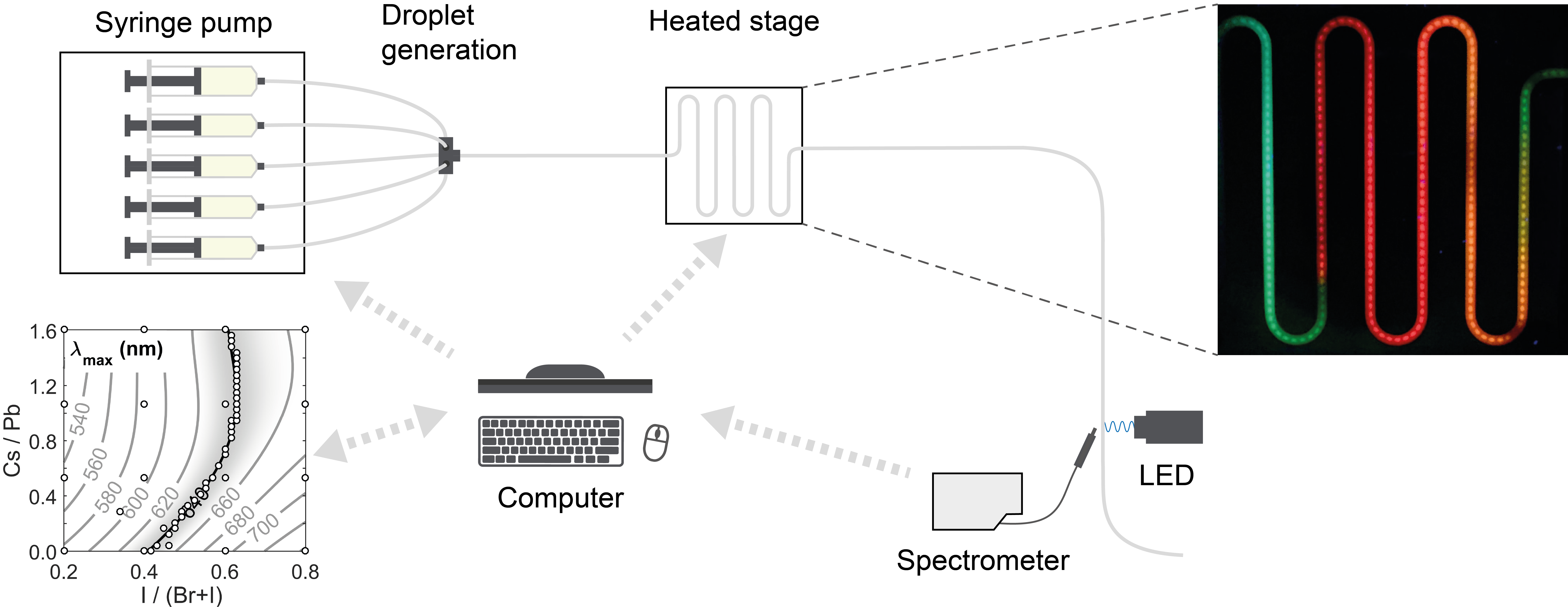Synthesis of (FA/Cs)Pb(Br/I)3 Perovskite Nanocrystals with Controlled Emission Properties through Adaptive Sampling in a Microfluidic Reactor
All-inorganic as well as mixed organic-inorganic metal halide perovskite nanocrystals possess attractive optoelectronic properties which make them promising targets for a wide range of applications. In particular, the development of these materials as emitters for next generation displays requires precisely controlled emission properties achieved through compositional tuning. We present a Kriging-based adaptive sampling algorithm in conjunction with an automated microfluidic reactor equipped with real-time fluorescence detection. This system allows us to rapidly identify compositions within the compositional parameter space resulting in pure-red emitting (FA/Cs)Pb(Br/I)3 nanocrystals (FA = formamidinium). The algorithm iteratively computes optimal sampling points at each stage of the experiment to reach the target emission wavelength, based on spectroscopic measurements at previously visited experimental conditions. The procedure enables a statistical evaluation of reagent concentrations and temperatures yielding the desired emission wavelength in a rapid manner while using minute amounts of reagent and ensuring high reproducibility.
